5 Proven Email Copywriting Formulas That Convert [+Examples]
Guest Author
Every email you send should have a goal. Whether you want your readers to buy your product, create new leads, encourage engagement, or sign up for a course.
However, with many brands redoubling their efforts in email marketing and cold email, your emails must stand out and capture the attention of your readers.
There are various email copywriting strategies you can implement that make writing engaging emails easier. The good news is that by the time you complete reading this article, you’ll be well on your way to producing email copy that converts.
1. AIDA
The AIDA model acronym stands for Attention, Interest, Desire, and Action. Let’s take a closer look at each component.
First, you need to draw the attention of potential customers to a certain message and make it appealing enough to keep their interest. Then, depending on the benefits of what has been provided to them, consumers create a desire for the product or service you are presenting.
The final step is for consumers to take action. That generally involves getting the reader to click on the link in your email. Let’s look at a real-life example of AIDA in action.
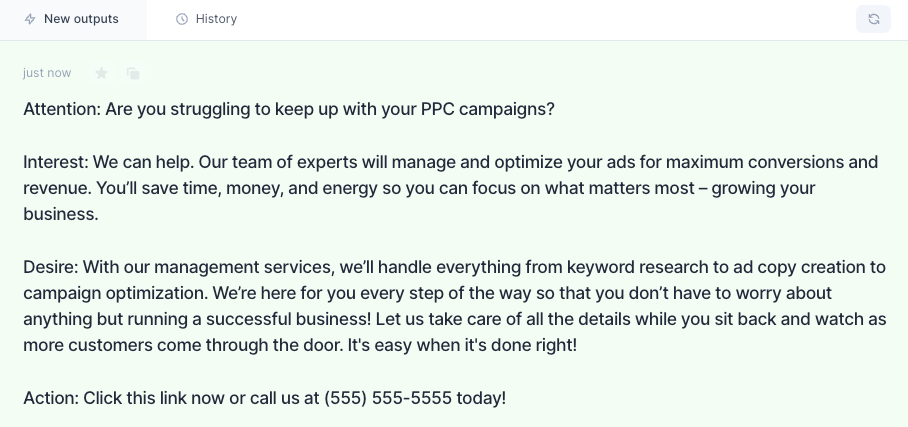
The subject line catches the reader’s attention by asking a relatable question piquing their interest to find out more about how to keep up with PPC campaigns. It’s direct and informative.
The first paragraph generates the reader’s interest. It covers how the company can help the reader solve their problem. That is followed by the “desire” section, which discusses the benefits.
Finally, the copy ends with a compelling call to action to convert the reader.
The AIDA model is a great way to hook the reader and bring them to the point of taking action. You can use the AIDA model to get more people to click that CTA button.
2. PAS
PAS is an acronym for Problem, Agitate, and Solve. The following is a breakdown of the formula:
- Problem: Identify a problem
- Agitate: Agitate the problem
- Solve: Find and provide a solution to the problem.
You can use the PAS formula for any business, service, or product that solves a problem. Here’s an example of how to use PAS when it comes to email copywriting.
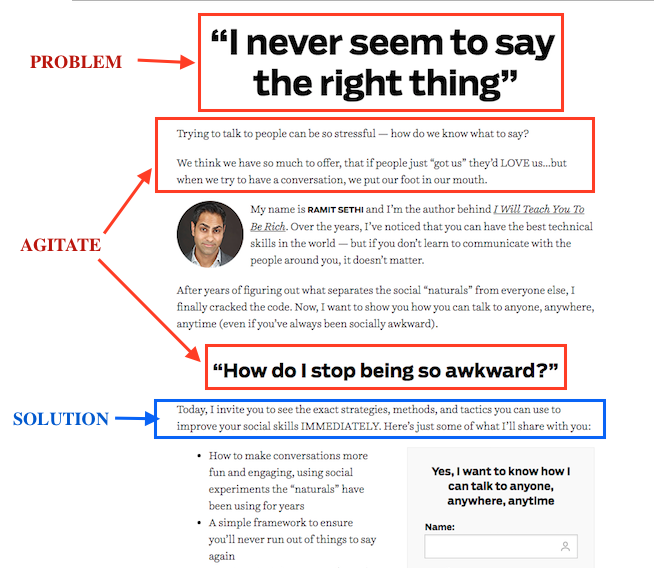
In this example, the headline is used to call out the problem.
The first few paragraphs agitate this issue. Essentially, the goal is to identify the various ways the problem negatively impacts your prospect.
You then end the copy by revealing the solution to this pressing issue. You can use this formula to get people to click through to a sales page, blog post, or something else entirely.
3. FAB
You can use the FAB Framework to assess your writing. Product marketers and business owners, particularly those that use B2B content, are more familiar with this structure. Here are the three parts to it:
- Features: Your product or service’s qualities are what set you apart from the competition. What exactly does it do, and how does it benefit people’s daily lives? Two examples of features are “easy to use” and “fast.” The best way to avoid getting lost is to keep these points simple.
- Advantage: Highlight why a buyer should buy from you or your goods rather than from someone else. To make the reader feel confident in their purchase decision, his section should provide specifics on how the product will help the reader. A few examples include “adds more value” and “saves time.”
- Benefits: The benefits of your product/service show how it can make users’ lives better. What aspect of your product, service, or other offerings will leave them satisfied with their purchase? Examples include “elevated mood,” “simpler parenting,” etc.
Consider this example by Everlane, an online retailer that prides itself on designing ethically made modern basics for everyday life. In light of the importance of sustainability to their clients, Everlane focuses on its efforts to produce a low-waste sneaker.
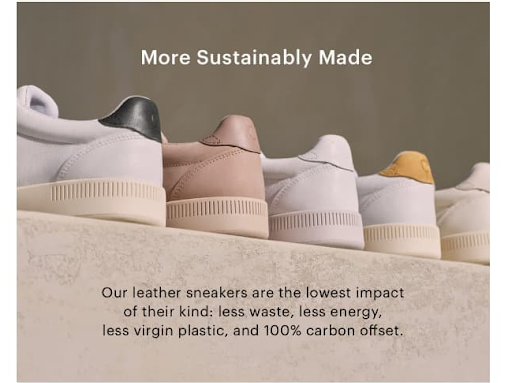
When it comes to leather, it’s both a feature and a substance. The benefit is that it does not have a significant degree of influence. The advantages include less waste, less energy, less virgin plastic, and a complete carbon offset clearly stated in this copy.
4. BAB
Before-After-Bridge (also known as BAB) is an email copywriting strategy that guides someone from envisioning where they are to a better situation with your assistance. It aligns your product or service appeal with the customers’ pain points.
You can use BAB to present your product’s advantages and benefits, allowing you to craft benefit-focused copy.
- Before: Start by describing their current situation and how the pain points affect them.
- After: Show them a happy future vision where these pain points/problems no longer exist. The purpose of the “after” segment is to arouse desire.
- Bridge: Lastly, after describing the Before and After the situation, present your product/service as the bridge that can solve the problem.
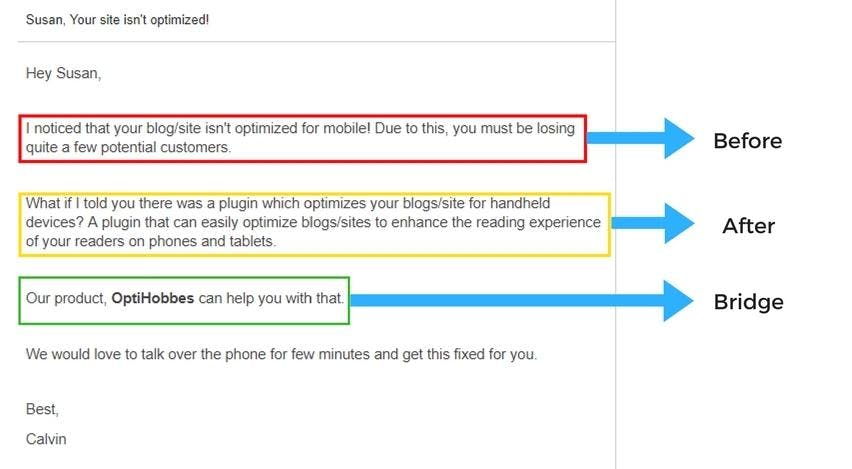
There is a reason why this technique works so well: It stops you from writing about features and tools and instead focuses on how your product will benefit your readers.
For instance, the subject line and the introduction in the image above describe the reader’s current situation. The second paragraph then paints a picture of where the reader’s problems are solved. The email wraps up by mentioning how the product can help them solve their problem.
Tip: Grab more email copywriting formulas and ready-to-go templates here:
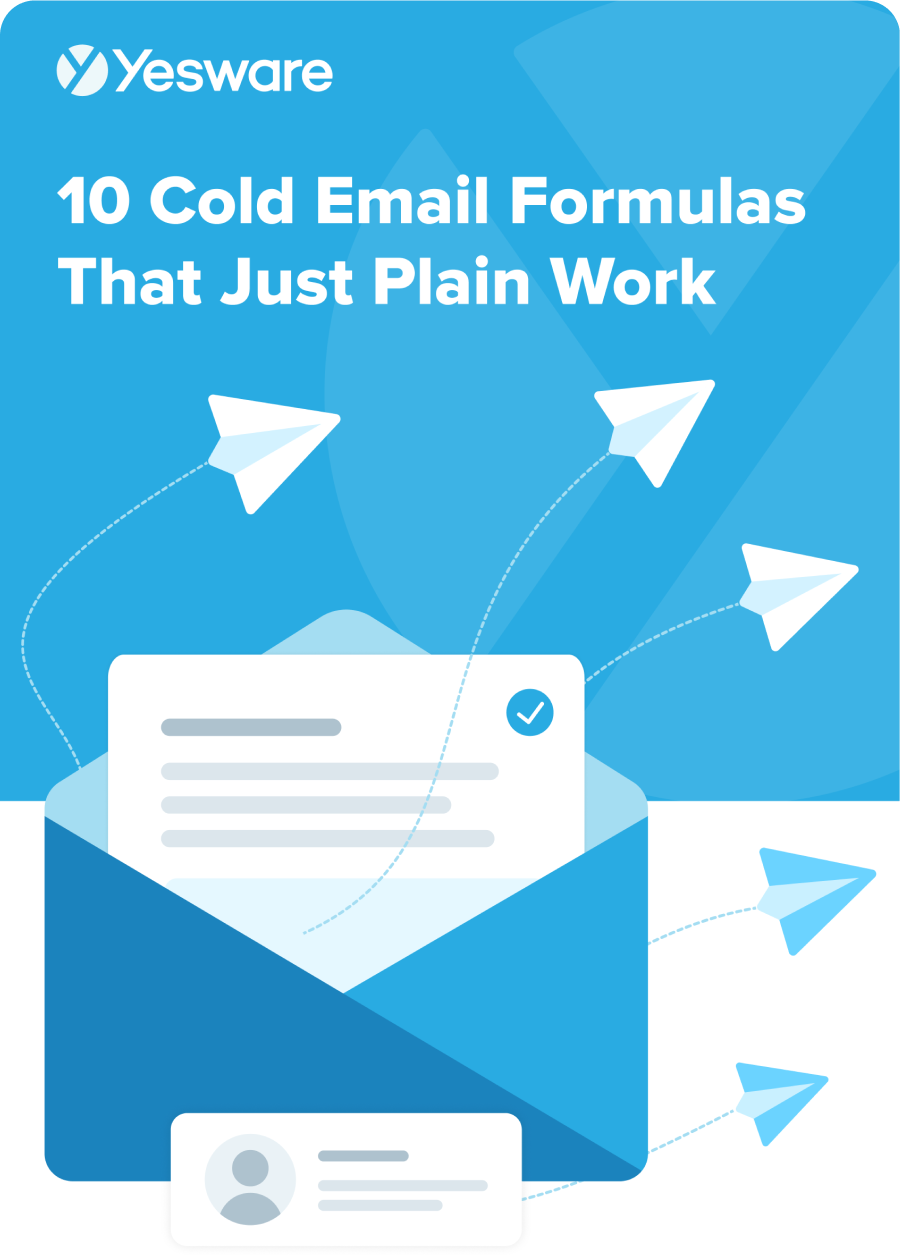 10 Cold Email Formulas That Just Plain WorkSee how B2B sales professionals are using these cold email templates to engage more prospects, fill the top of their funnel and build more sales pipeline faster.
10 Cold Email Formulas That Just Plain WorkSee how B2B sales professionals are using these cold email templates to engage more prospects, fill the top of their funnel and build more sales pipeline faster.
5. 4 Ps
The 4 Ps technique gives a structure for writing email copy that appeals to the desires of your customers. It is a conversion-oriented formula that is aimed to make a specific offer (such as a product, event, or content piece) more appealing to the demands and needs of your reader.
- Promise: You begin by offering a quick, snappy promise. It’s vital to make sure that your promise corresponds directly to your audience and the desires of your target market audience.
- Paint: Next, paint a vision of what their world will be like after you deliver on your promise.
- Proof: Now, you need to prove that you can deliver on your promise.
- Push: It’s time to nudge your readers into action after they’ve become enamored with your offering.
Using the 4 Ps strategy is a terrific way to develop effective emails that increase your conversion rate. To be successful, you must first fully grasp your readers’ viewpoint and then use that understanding to construct a picture of how your product can help them achieve their goals.
While crafting your email subject, avoid common errors such as poor grammar and punctuation that plague the vast majority of copywriters in existence. Ensure that you properly check the grammar of your copy before sending it to your email list.
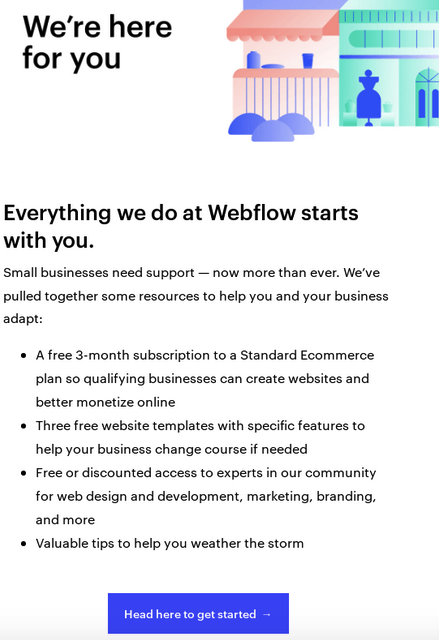
Webflow uses the 4P formula on its homepage to illustrate how its main product can assist customers. Using free tips and a free 3-month subscription, it demonstrates to small business owners what the product can achieve and how to monetize their efforts.
The copy ends with a gentle push to nudge the readers to click to the call to action.
Conclusion
Email copywriting gives you a chance to connect with your audience and accomplish your marketing and sales goals in an increasingly crowded inbox.
You can improve the effectiveness of your email copywriting by aligning your thoughts using the tips mentioned in this post. Formulas like AIDA, PAS FAB, and others on this list are proven to persuade and get people to take action.
When executed correctly, they have the potential to boost the click-through rates of your email campaign. Additionally, being a good copywriter involves a continuous process of looking for ways to enhance your craft. You’ll never be completely satisfied with the quality of your copy. Therefore, you must test, edit, practice, and attempt new things to improve and get better results over time.
When it comes to email copywriting, the quality of your copy will directly influence whether you sell anything at all or whether you are unable to keep up with demand from your frenzied and devoted clients. Your customers have to believe that you can deliver the promise you make, that they can trust you, and that your copy can be believed. Doing so will instantly distinguish you from the crowd and open the door to tremendous prospects for growth and success.
About the Author: David Ly Khim

David is the co-founder of Omniscient Digital, a content marketing agency that works with growing B2B SaaS companies. Previously, he was at HubSpot for 6 years serving as a Growth Marketer and a Growth Product Manager. He’s been featured in HubSpot, Product-Led World, and Buffer and has spoken across the world from San Francisco to London and Milan to Kyiv.
Get sales tips and strategies delivered straight to your inbox.
Yesware will help you generate more sales right from your inbox. Try our Outlook add-on or Gmail Chrome extension for free, forever!
Related Articles
Anya Vitko
Jenny Keohane
Casey O'Connor
Sales, deal management, and communication tips for your inbox
![5 Proven Email Copywriting Formulas That Convert [+Examples]](/blog/_next/image/?url=https%3A%2F%2Fwww.yesware.com%2Fwp-content%2Fuploads%2F2022%2F09%2Femail-copywriting-formulas-yesware.jpg&w=1984&q=75)
